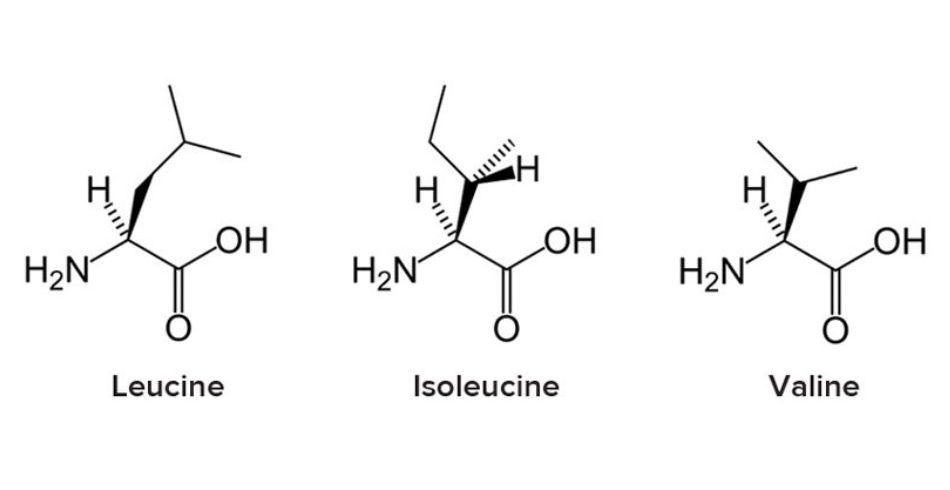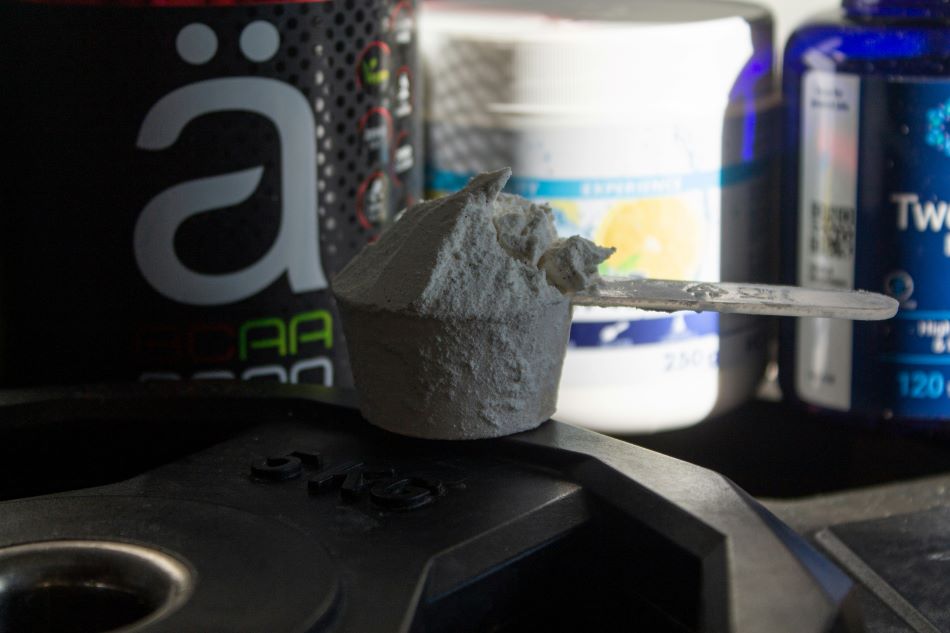What are BCAAs and how do they benefit your workout?

Whether you’re new to fitness or a seasoned athlete, you may have heard of branched-chain amino acids (BCAAs) and their benefits for muscle support and recovery. But what exactly are BCAAs, and how do they work in the body? From reducing muscle fatigue to aiding in muscle repair, BCAAs are often praised as essential components for optimizing workouts and enhancing recovery. In this article, we’ll break down the science behind BCAAs, how they work, and why they have become staples in fitness and nutrition.
BCAAs: what they are and why they’re important
What are BCAAs?
Branched-chain amino acids (BCAAs) refer to three specific essential amino acids: leucine, isoleucine, and valine. They are termed “branched-chain” due to their unique chemical structure, which features a branch-like formation in their molecular configuration. This branched structure isn’t just for show—it gives BCAAs the ability to bypass the liver and go directly to the muscles for immediate energy, making them especially useful during exercise.
Why are BCAAs essential?
BCAAs fall into the category of essential amino acids—meaning they must come from food or supplements, as the body can’t produce them on its own. Foods rich in BCAAs include animal proteins like meat, eggs, and dairy products, as well as plant-based sources like beans and nuts, though in lower concentrations. However, because the intake of BCAAs in food may not always meet the demands of rigorous exercise, many people turn to BCAA supplements to enhance their intake, aiming for faster recovery and more efficient muscle repair.
Studies, such as those published in the Journal of the International Society of Sports Nutrition, show that BCAA supplementation before and after exercise may reduce muscle damage and speed up recovery time, making these amino acids particularly valuable for athletes and fitness enthusiasts.
Breaking down the three key BCAAs: Leucine, Isoleucine, and Valine
Each BCAA serves a specific function in supporting the body’s physical endurance and recovery capabilities. Here’s a closer look at how each one contributes to muscle health and energy.
Leucine: muscle-building powerhouse
- Primary Role: Leucine is often considered the “star” of BCAAs due to its direct role in muscle protein synthesis (MPS). MPS is the process by which the body repairs damaged muscle fibers and builds new tissue after physical stress, such as weightlifting or endurance training.
- Mechanism: Leucine activates a protein pathway known as mTOR (mammalian target of rapamycin), which plays a critical role in cell growth and protein synthesis. Activating mTOR is like flipping a switch that initiates muscle growth and repair. According to a study published in leucine’s impact on mTOR has been shown to increase muscle protein synthesis after resistance exercise, helping the body repair and build muscle more effectively.
- Additional Benefits: Beyond muscle growth, leucine is also essential for maintaining energy balance and metabolic health. Leucine’s activation of mTOR can positively influence insulin sensitivity, making it easier for muscle cells to absorb glucose and use it efficiently as fuel.
Isoleucine: endurance enhancer
- Primary Role: Isoleucine is essential for energy production and plays a unique role in promoting muscle endurance. Its ability to help the body utilize glucose more effectively makes it particularly valuable for endurance activities like running, cycling, and prolonged high-intensity workouts.
- Mechanism: Isoleucine supports glucose uptake into muscle cells, ensuring that muscles have a steady supply of energy. By increasing glucose metabolism, isoleucine helps maintain blood sugar levels and sustain energy throughout prolonged exercise sessions. A study found that isoleucine enhances glucose absorption by muscle cells during exercise, which reduces muscle fatigue and prolongs performance.
- Additional Benefits: Isoleucine has also been linked to promoting fat utilization during exercise. By encouraging the use of fat as a fuel source, it helps conserve muscle glycogen, extending endurance and delaying fatigue.
Valine: muscle protector
- Primary Role: Valine is known for its ability to prevent muscle breakdown and support muscle tissue preservation during physical activity, especially when the body is under energy stress, such as during fasting, prolonged exercise, or caloric restriction.
- Mechanism: Valine contributes to glycogen storage in muscle tissue, providing muscles with a readily available energy source. During workouts, glycogen in the muscles is broken down to fuel exercise, and valine helps replenish these stores, preventing muscle protein from being used as an energy source. This action helps preserve muscle mass, especially during intense or long workouts, which can otherwise trigger catabolism (muscle breakdown).
- Additional Benefits: Studies, like those published in Journal of Nutrition show that valine helps reduce central nervous system fatigue by blocking the uptake of tryptophan, an amino acid that can increase serotonin levels and make you feel tired.
Key Benefits of BCAAs (Leucine, Isoleucine, Valine):
This supports the development of lean muscle mass, especially when combined with other essential amino acids or protein sources.

- Delayed Fatigue and Improved Endurance: Isoleucine helps regulate glucose levels, providing muscles with a steady energy supply during exercise. Valine may reduce central fatigue by influencing tryptophan uptake, helping you feel less tired during prolonged activity.
- Alternative Fuel for Muscles: BCAAs are metabolized directly in the muscles, serving as an immediate energy source during intense workouts. This direct use helps preserve glycogen stores and reduces the need for the body to break down muscle tissue for energy.
- Protection Against Muscle Catabolism: By providing an energy source, BCAAs can help prevent the breakdown of muscle protein. This is beneficial for maintaining muscle mass during long cardio sessions, calorie-restricted diets, or when aiming to lose fat without losing muscle.
- Faster Recovery and Reduced Muscle Soreness: Supplementing with BCAAs may reduce muscle soreness and support quicker recovery after intense exercise. They can lessen the severity of delayed-onset muscle soreness (DOMS), leading to fewer days of post-workout stiffness.
- Enhanced Muscle Protein Synthesis (MPS): Leucine stimulates MPS through activation of the mTOR pathway, aiding in muscle repair and growth.
Common forms and dosages: how to take BCAAs
Forms of BCAA Supplements:
- Powder: The most popular form, BCAA powder can be easily mixed with water or a sports drink. It’s often flavored and easily customizable for personal taste preferences.
- Capsules/Tablets: Ideal for those who prefer a quick, no-mix option.
- Liquid: Less common but available; some athletes prefer liquid forms for quick absorption.
Recommended Dosages: The ideal BCAA dosage varies based on fitness goals, body weight, and intensity of exercise, but general recommendations include:
- Daily Intake: 5–10 grams of BCAAs before or after workouts for general muscle support.
- High-Intensity Training: Some athletes consume up to 20 grams daily, split into multiple servings throughout the day.
BCAA vs. whole protein supplements: do you need both?
While BCAAs are critical for muscle recovery, they work best when paired with a well-rounded protein intake. Whole protein sources (like whey, casein, or plant-based protein) contain all nine essential amino acids, providing a complete profile for muscle recovery and overall health. BCAAs are ideal for intra-workout support and targeted recovery, while whole protein supplements are optimal for meeting daily protein requirements.
When to Use BCAAs: If you’re looking to enhance muscle recovery and reduce fatigue specifically around workouts, BCAAs can be a great choice. For general protein needs, whole protein supplements are more comprehensive.
Are there any side effects or risks?

While BCAAs are generally safe when taken within recommended dosages, it’s important to follow guidelines to avoid potential side effects. Large quantities of BCAAs over extended periods could lead to gastrointestinal discomfort, and some studies suggest that high BCAA intake without adequate whole protein intake might reduce the synthesis of other essential amino acids. Always consult with a healthcare professional before starting any new supplement regimen, especially if you have a medical condition.
Conclusion: are BCAAs right for you?
BCAAs are a powerful tool for anyone looking to improve workout performance, reduce muscle soreness, and support recovery. With their unique role in muscle protein synthesis, energy production, and endurance, they offer targeted support that can make a noticeable difference, especially for those involved in high-intensity training. For those aiming to get the most out of their workouts, branched-chain amino acids could be the missing ingredient in your fitness regimen. Whether in powder, capsule, or liquid form, they’re versatile, convenient, and scientifically supported as effective workout allies.




